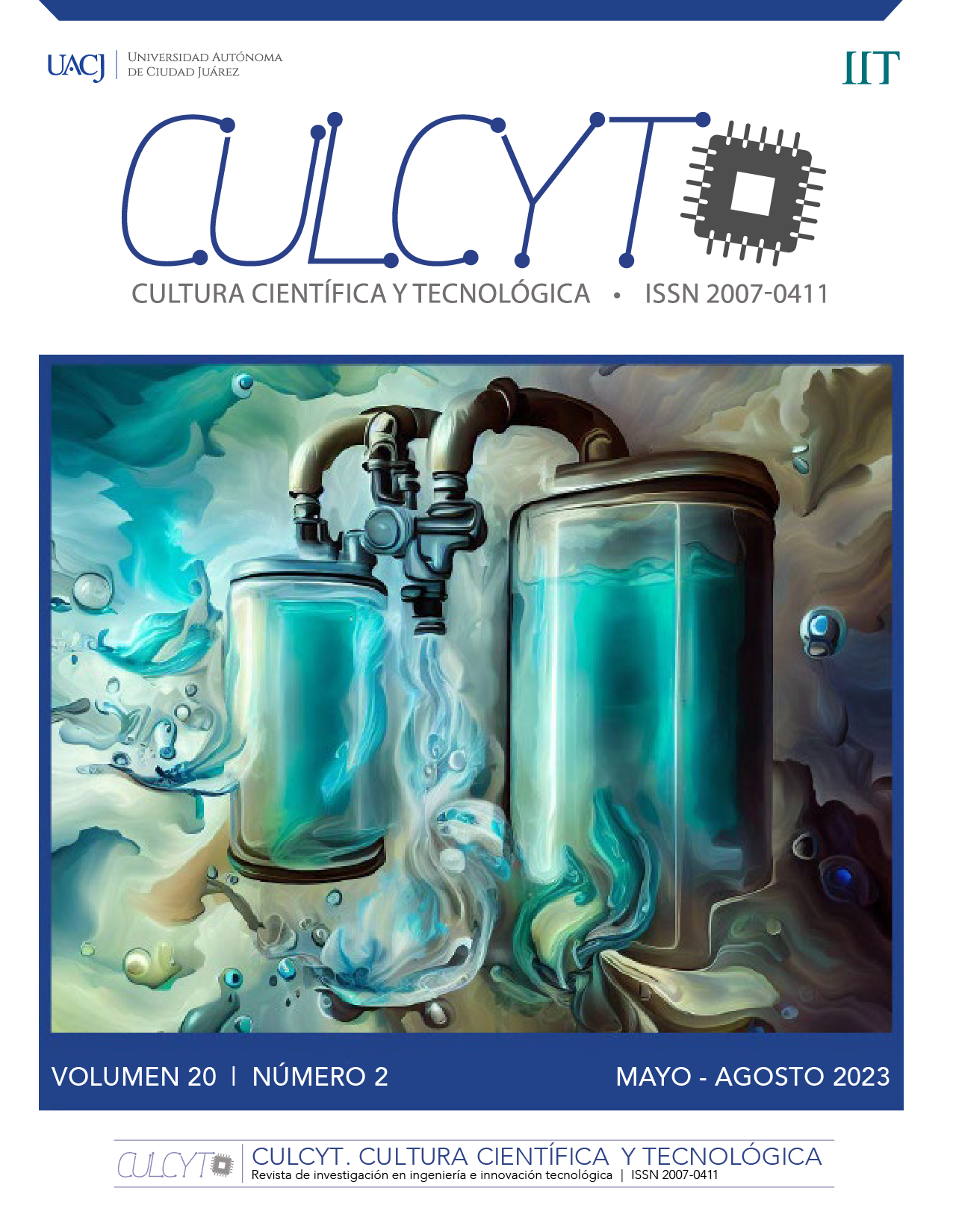Diseño de simulador que identifica variables clave y su impacto en la producción de chayote
DOI:
https://doi.org/10.20983/culcyt.2023.2.2e.6Palabras clave:
agroindustria, dinámica de sistemas, pronósticos, cadena de suministro, chayoteResumen
El presente artículo reporta un caso de estudio desarrollado en una empresa agroindustrial mexicana que produce chayote, durante el cual se desarrolló un modelo de simulación de pronósticos que sirve de apoyo para estimar el rendimiento de las huertas, así como su merma, y que ayuda a evaluar el nivel de satisfacción de los clientes por la entrega de sus pedidos. Se analizaron variables clave de la cadena de suministro del chayote, tales como condiciones climatológicas, mermas, área sembrada, rendimiento promedio por hectárea, tasas de exportación y contratos celebrados con los clientes. Con esta herramienta, la empresa podrá tomar medidas oportunas de abastecimiento, considerar a otros productores para que sean sus proveedores, cumplir con los pedidos de los clientes y, de esta forma, incrementar su nivel de satisfacción. En el desarrollo del modelo, se utilizó la metodología de Dinámica de Sistemas. La empresa realizó la validación del modelo y recibió una interfaz gráfica que permite la manipulación de ciertas variables para entender como estas afectan al proceso productivo del chayote mediante una serie de indicadores clave de desempeño.
Descargas
Citas
SIAP. “Chayote, hortaliza que pertenece a la familia de las calabazas contribuye a la salud”. Gob.mx. https://www.gob.mx/siap/articulos/chayote-hortaliza-que-pertenece-a-la-familia-de-las-calabazas-contribuye-a-la-salud (accedido en: ag. 15, 2022).
H. Avendaño, J. Cadena, M. L. C. Arévalo, E. Campos, V. M. Cisneros y J. F. Aguirre, Las variedades del chayote mexicano, recurso ancestral con potencial de comercialización, 1.a ed. México: GISeM, 2010, pp. 88. [En línea]. Disponible en: https://www.gob.mx/cms/uploads/attachment/file/231856/Las_variedades_del_chayote_mexicano.pdf
J. Nataren-Velazquez, A. L. Del Angel-Pérez, J. Valente Megchún-García, E. Ramirez-Herrera, C. A. Hernandez-Estrada, I Meneses-Marquez, “Caracterización del cultivo de chayote (Sechium edule Jacq) (Swartz) en la zona de Altas Montañas del estado de Veracruz”, RINDERESU, vol. 5, no. 1, pp. 134-152, sept., 2020. [En línea]. Disponible en: http://rinderesu.com/index.php/rinderesu/article/view/52/56.
L. R. Izquierdo, J. M. Galán, J. I. Santos y R. Del Olmo, “Modelado de sistemas complejos mediante simulación basada en agentes y mediante dinámica de sistemas”, EMPIRIA, no. 16, pp. 85-112, 2008. [En línea]. Disponible en: https://www.redalyc.org/pdf/2971/297124024004.pdf.
S. A. David, D. D. Quintino, C. M. C. Inacio Jr. y J. A. T. Machado, “Fractional dynamic behavior in ethanol prices series”, J. Comput. Appl. Math., vol. 339, 2018, pp. 85-93, doi: 10.1016/j.cam.2018.01.007.
M. V. Turdera, “Energy balance, forecasting of bioelectricity generation and greenhouse gas emission balance in the ethanol production at sugarcane mills in the state of Mato Grosso do Sul”, Renew. Sust. Energ. Rev., vol. 19, 2013, pp. 582-588, doi: 10.1016/j.rser.2012.11.055.
L. G. Tapia, “The effects of oil price volatility on ethanol, gasoline, and sugar price forecasts”, Energy, vol. 181, 2019, pp. 1012-1022, doi: 10.1016/j.energy.2019.05.067.
A. Sanchez y D. Gomez, “Analysis of historical total production costs of cellulosic ethanol and forecasting for the 2020-decade”, Fuel, vol. 130, 2014, pp. 100-104, doi: 10.1016/j.fuel.2014.04.037.
D. C. Tascón y O. Díaz, “Air traffic forecast and its impact on runway capacity. A System Dynamics approach”, J. Air Transp. Manag., vol. 90, p. 101946, 2021, doi: 10.1016/j.jairtraman.2020.101946.
Y. He, J. Jiao, Q. Chen, S. Ge, Y. Chang y Y. Xu, “Urban long term electricity demand forecast method based on system dynamics of the new economic normal: The case of Tianjin”, Energy, vol. 133, 2017, pp. 9-22, doi: 10.1016/j.energy.2017.05.107.
W. Wang, K. Li, Y. Liu, J. Lian y S. Hong, “A system dynamics model analysis for policy impacts on green agriculture development: A case of the Sichuan Tibetan Area”, J. Clean. Prod., vol. 371, 2022, doi: 10.1016/j.jclepro.2022.133562.
W. Zhou, A. Moncaster, E. O’Neill, D. M. Reiner, X. Wang, P. Guthrie, “Modelling future trends of annual embodied energy of urban residential building stock in China”, Energy Policy, vol. 165, 2022, doi: 10.1016/j.enpol.2022.112932.
POWER | Data Access Viewer, National Aeronautics and Space Administration, ag. 16, 2022. [En línea]. Disponible en: https://power.larc.nasa.gov/data-access-viewer/
Descargas
Publicado
Cómo citar
Número
Sección
Licencia
Derechos de autor 2023 Héctor Daniel García Castro, Cuauhtémoc Sánchez Ramírez, Magno Ángel González Huerta

Esta obra está bajo una licencia internacional Creative Commons Atribución-NoComercial 4.0.
Todos los contenidos de CULCYT se distribuyen bajo una licencia de uso y distribución “Creative Commons Reconocimiento-No Comercial 4.0 Internacional” (CC-BY-NC). Puede consultar desde aquí la versión informativa de la licencia.
Los autores/as que soliciten publicar en esta revista, aceptan los términos siguientes: a) los/las autores/as conservarán sus derechos de autor y garantizarán a la revista el derecho de primera publicación de su obra; y b) se permite y recomienda a los/las autores/as agregar enlaces de sus artículos en CULCYT en la página web de su institución o en la personal, debido a que ello puede generar intercambios interesantes y aumentar las citas de su obra publicada.



